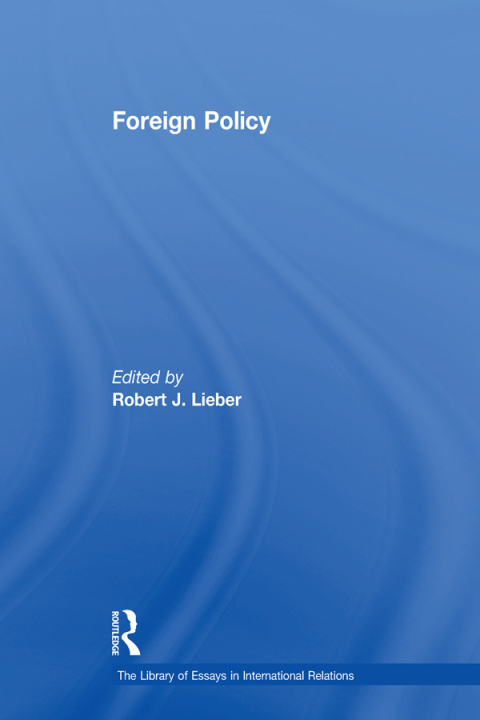Description
Efnisyfirlit
- Cover
- Half Title
- Title Page
- Copyright Page
- Table of Contents
- Acknowledgements
- Series Preface
- Introduction
- Part I How to Think About Foreign Policy
- 1 Robert Jervis (l968), ‘Hypotheses on Misperception‘, World Politics, 20, pp. 454–79.
- 2 Graham T. Allison (1969), ‘Conceptual Models and the Cuban Missile Crisis’, The American Political Science Review, 63, pp. 689–718.
- 3 Kennelh A. Oye (1985), ‘Explaining Cooperation under Anarchy: Hypotheses and Strategies’, World Politics, 38, pp. 1–24.
- 4 Jack Snyder (2004), ‘One World, Rival Theories’, Foreign Policy, (November), pp. 53–62.
- Part II The Domestic Context
- 5 Robert D. Putnam (1988), ‘Diplomacy and Domestic Politics: The Logic of Two-Level Games’, International Organization, 42, pp. 427–60.
- 6 Walter Russell Mead (1999), ‘The Jacksonian Tradition and American Foreign Policy’, The National Interest, 58, pp. 5–29.
- 7 Seymour Martin Lipset (2000), ‘Still the Exceptional Nation?’, The Wilson Quarterly, 24, pp. 31–45.
- Part III Foreign Policy and Unipolarity
- 8 Francis Fukuyama (1989), ‘The End of History?’, The National Interest, 16, pp. 3–18 [173–91].
- 9 Samuel P. Huntington ( 1993), ‘The Clash of Civilizations?’, Foreign Affairs, 72, pp. 22–49.
- 10 Jessica T. Mathews ( 1997), ‘Power Shift’, Foreign Affairs, 76, pp. 50–66.
- 11 Kenneth N. Waltz (2000), ‘Structural Realism after the Cold War’, International Security, 25, pp. 5–41.
- 12 Barry R. Posen (2003), ‘Command of the Commons: The Military Foundation of U.S. Hegemony’, International Security, 28, pp. 5–46.
- 13 Eliot A. Cohen (2004), ‘History and the Hyperpower’, Foreign Affairs, 83, pp. 49–63.
- Part IV Foreign Policy After 9/11
- 14 John Lewis Gaddis (2002), ‘A Grand Strategy of Transformation’, Foreign Policy, 133, pp. 50–57.
- 15 Ivo H. Daalder and James M. Lindsay (2003), ‘Bush’s Revolution’, Current History, 102, pp. 367–76.
- 16 Robert J. Lieber (2003), ‘The Neoconservative-Conspiracy Theory: Pure Myth’, The Chronicle of Higher Education, 49, pp. B14–15 [3537–7].
- 17 Graham Allison (2004), ‘How to Stop Nuclear Terror’, Foreign Affairs, 83. pp. 64–74.
- 18 Joseph S. Nye, Jr (2004), ‘The Decline of America’s Soft Power: Why Washington Should Worry’, Foreign Affairs, 83, pp. 16–20.
- 19 Charles Krauthammer (2004), ‘In Defense of Democratic Realism’, The National Interest, 11, pp. 15–25.
- 20 Keir A. Lieber and Gerard Alexander (2005), ‘Waiting For Balancing: Why the World Is Not Pushing Back’, International Security, 30, pp. 109–39.
- Part V Foreign Policy and the Future
- 21 G. John Ikenberry (2003), ‘Is American Multilateralism in Decline?’, Perspectives on Politics, 1, pp. 533–50.
- 22 Stephen G. Brooks and William C. Wohlforth (2005), ‘International Relations Theory and the Case against Unilateralism’, Perspectives on Politics, 3, pp. 509–24.
- 23 Azar Gat (2007), ‘The Return of Authoritarian Great Powers’, Foreign Affairs, 86, pp. 59–69.
- 24 Michael Mandelbaum (2006), ‘David’s Friend Goliath’, Foreign Policy (January), pp. 50–56.
- Name Index






Reviews
There are no reviews yet.